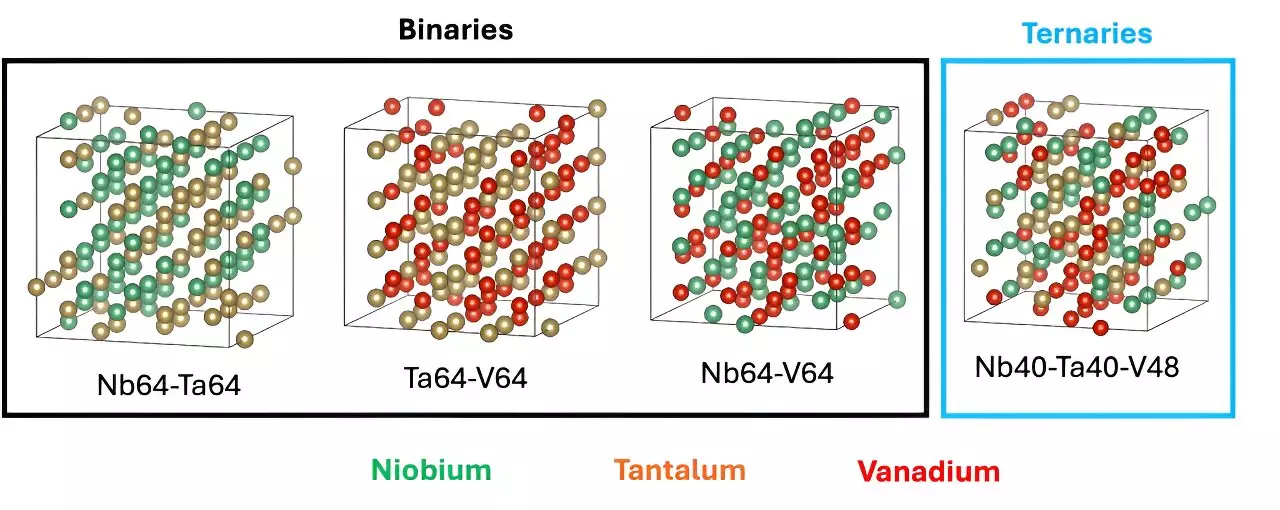Recent advancements in artificial intelligence (AI) have opened up groundbreaking avenues in various fields, particularly in material science. A notable example comes from a study conducted by the Oak Ridge National Laboratory (ORNL), showcasing how AI can be leveraged to discover new alloys tailored for use in nuclear fusion reactors. The urgency in developing these innovative materials arises from the need for components that can withstand the extreme conditions present in fusion environments. The study, published in the esteemed journal Scientific Data, paves the way for significant improvements in fusion technology.
Traditionally, the materials used in fusion reactors primarily consisted of tungsten-based alloys. While tungsten has exhibited commendable high-temperature resistance properties, it has shown inconsistency in meeting the shielding requirements necessary for safe nuclear operations. The limitations of these traditional materials create a compelling case for exploring alternatives that could revolutionize how components are designed for nuclear fusion. In this context, researchers aim to transcend the conventional boundaries of material composition and performance, an endeavor that AI is uniquely positioned to facilitate.
Led by data scientist Massimiliano Lupo Pasini and a dedicated team, the ORNL initiative sought to harness AI’s capability to analyze extensive datasets and identify promising new combinations of metallic elements. The complexity of alloy design stems from the vast array of potential metallic combinations, making traditional trial-and-error methodologies inefficient. By integrating machine learning techniques into the research process, the team aims to streamline alloy discovery, significantly decreasing the time required to identify viable candidates.
The results achieved by Lupo Pasini’s team illustrate the successful identification of three elemental candidates through AI-guided analysis, indicating the potential for more innovative fusion reactor components. Collaborators from various directorates at ORNL contributed their expertise, showcasing a unified front to tackle the multifaceted challenges inherent in this type of research.
The Process: Data Generation and AI Model Training
However, the journey from data generation to practical application is not simple. The study emphasizes the necessity for a diverse set of elements in alloy composition—specifically six different elements—to pave the way for the design of high-entropy alloys. The computational demands associated with quantum mechanical calculations pose a significant challenge. Extensive computational resources, including the Perlmutter and Summit supercomputers, were employed to generate the data needed for the AI model, leading to a year-long data-gathering process. Such resources underline the need for substantial investments in computational infrastructure to enable cutting-edge materials science research.
The pathway ahead for the ORNL team involves training their AI model using the large dataset they’ve compiled. This phase is fundamental for enhancing the model’s ability to predict the best combinations and ratios of the six elements to create genuinely disruptive alloys. The collaboration between AI and material science has the potential to usher in a new era of fusion technology that could render current limitations obsolete.
The application of AI in materials discovery for nuclear fusion has implications that extend beyond just improving reactor components. It represents a paradigm shift in how scientific research can be conducted, merging discipline-specific expertise with computational power for accelerated discovery. The ability to quickly identify promising materials not only aids in the development of safer and more effective fusion reactors but also signifies a broader trend where AI plays a central role in tackling complex scientific challenges across various fields.
The study by ORNL exemplifies a significant stride towards refining nuclear fusion technology. By employing AI to navigate the intricate web of alloy compositions, researchers are on the brink of potential breakthroughs that could redefine energy production as we know it. As the scientific community continues to explore these innovative methodologies, the future of nuclear fusion—and indeed, the quest for clean energy—looks increasingly promising. Through collaborative efforts and technological advancements, a sustainable energy future may soon become a reality.

